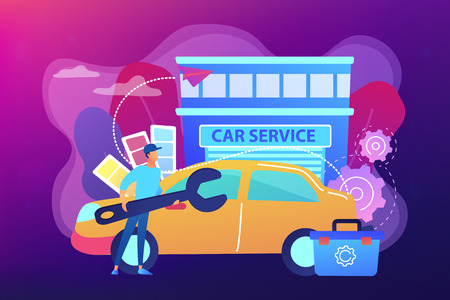1. Introduction: The Rise of Car Sharing
Car sharing has rapidly emerged as a popular alternative to traditional car ownership. As urban areas become more crowded and parking spaces become scarce, many people are looking for more flexible and cost-effective ways to get around. Car sharing services provide on-demand access to vehicles without the long-term commitment and expenses associated with owning a car.
How Car Sharing Works
Car sharing platforms allow users to rent vehicles by the hour or day through a mobile app. These services offer access to a variety of cars parked in strategic locations around cities, making it easy for users to pick up and drop off vehicles as needed.
Key Benefits of Car Sharing
| Benefit | Description |
|---|---|
| Cost Savings | Users only pay for the car when they need it, avoiding expenses like insurance, maintenance, and parking. |
| Convenience | Vehicles are available at multiple locations and can be booked instantly via an app. |
| Reduced Traffic | Fewer cars on the road lead to less congestion and lower emissions. |
| Eco-Friendly | Many car sharing fleets include electric or hybrid vehicles, reducing carbon footprints. |
Car Sharing vs. Traditional Car Ownership
One of the biggest attractions of car sharing is its flexibility. Unlike owning a car, which involves fixed costs like insurance, maintenance, and depreciation, car sharing enables users to pay only when they actually use a vehicle. Heres a quick comparison:
| Factor | Car Sharing | Car Ownership |
|---|---|---|
| Upfront Costs | None | High (down payment, taxes, registration) |
| Monthly Expenses | Varies based on use | Fixed (loan payments, insurance, parking) |
| Maintenance Responsibility | Company handles it | Owner pays for repairs and servicing |
| Environmental Impact | Lower (shared and electric options) | Higher (single-use vehicle) |
The Role of Car Sharing in the Broader Mobility Landscape
Car sharing is not just a convenient transportation option; it plays a key role in the growing mobility ecosystem. With the rise of ride-hailing, micromobility solutions like e-scooters and bike-sharing, and improvements in public transportation, car sharing helps bridge gaps by providing flexible transportation between major hubs and final destinations.
As cities continue to evolve, shared mobility services like car sharing will be an essential part of the future of urban transportation, offering an alternative that is both cost-effective and sustainable.
2. Key Benefits of Car Sharing
Car sharing is transforming the way people access transportation. Instead of owning a car, individuals can use a shared vehicle only when they need it. This approach offers several advantages, including cost savings, reduced environmental impact, and greater accessibility.
Cost Savings
One of the biggest benefits of car sharing is saving money. Car ownership involves expenses like loan payments, insurance, fuel, maintenance, and parking. With car sharing, users only pay for the time they use the vehicle, which can significantly lower transportation costs.
Comparing Costs: Ownership vs. Car Sharing
| Expense | Car Ownership | Car Sharing |
|---|---|---|
| Monthly Payments | Car loan or lease | Pay per use |
| Insurance | Ongoing insurance premiums | Usually included in the service |
| Fuel | Owner pays for all fuel | Often included in service fee |
| Maintenance | Regular maintenance costs | Covered by the car-sharing company |
Environmental Benefits
Car sharing helps reduce the number of vehicles on the road, which lowers carbon emissions and decreases traffic congestion. Since shared cars are often fuel-efficient, hybrid, or electric, they contribute to a greener transportation system.
How Car Sharing Reduces Environmental Impact
- Fewer vehicles on the road lead to lower greenhouse gas emissions.
- Car sharing companies typically use energy-efficient and low-emission vehicles.
- Individuals drive less when they use car-sharing, reducing their carbon footprint.
Increased Accessibility
Car sharing makes transportation accessible to more people, including those who cannot afford a car or prefer not to own one. It is especially useful in urban areas where parking is expensive and public transit may not reach every destination.
Who Benefits the Most?
- City Residents: Avoid the hassle of parking and maintenance.
- Occasional Drivers: Use a car only when needed, without the high costs.
- Travelers: Access a vehicle in different cities without renting a car.
With these significant benefits, car sharing is becoming a preferred mobility option for many people. As technology and transportation services continue to evolve, car-sharing platforms will play an even greater role in modern mobility.

3. Three. The Role of Technology in Mobility Services
Technology plays a crucial role in enhancing the efficiency and convenience of car-sharing services. Advancements in mobile apps, artificial intelligence (AI), and connectivity are revolutionizing the way people access and use shared vehicles. These innovations are making car sharing more seamless, reliable, and user-friendly.
Mobile Apps: Simplifying Access to Shared Cars
One of the most significant improvements in car-sharing services is the development of user-friendly mobile apps. These apps allow users to locate, reserve, and unlock vehicles instantly using their smartphones. The integration of GPS and real-time tracking further enhances the user experience by helping drivers find the nearest available cars effortlessly.
AI and Machine Learning: Enhancing Efficiency
Artificial intelligence and machine learning are powering smarter mobility solutions by analyzing user patterns and optimizing vehicle distribution. For instance, AI-driven demand prediction helps car-sharing companies position vehicles in high-usage areas, reducing wait times and ensuring better availability for customers.
Connectivity: Enabling a Seamless Experience
Connected car technology plays a pivotal role in car sharing. Many modern car-sharing vehicles come equipped with IoT-enabled systems that allow remote diagnostics, automatic maintenance alerts, and real-time vehicle updates. This ensures that cars remain in excellent condition and helps operators manage fleets more efficiently.
Key Technologies Driving Car-Sharing Innovations
| Technology | Impact on Car Sharing |
|---|---|
| Mobile Apps | Enable easy vehicle access, reservations, and payments |
| AI & Machine Learning | Improve vehicle distribution and demand forecasting |
| Connectivity & IoT | Enhance fleet management and vehicle maintenance |
| GPS & Real-Time Tracking | Help users locate available vehicles quickly |
The Future of Tech-Driven Mobility Services
As technology continues to evolve, car-sharing services will become even more efficient and accessible. The integration of autonomous vehicles, enhanced AI-driven recommendations, and improved connectivity will further transform the way people share and use cars. With these advancements, mobility services are set to offer an even smoother and more convenient experience for users.
4. Challenges and Barriers to Adoption
Car-sharing services have the potential to reshape urban mobility, but several challenges and barriers must be addressed for widespread adoption. These obstacles range from regulatory issues and consumer concerns to infrastructure limitations.
Regulatory Hurdles
One of the biggest challenges facing car-sharing services is government regulation. Rules and policies around car-sharing vary from city to city, making it difficult for companies to expand seamlessly. Some common regulatory barriers include:
| Regulatory Challenge | Impact on Car-Sharing |
|---|---|
| Insurance Requirements | High costs for coverage can make services expensive for users. |
| Zoning Laws | Restrictions on where shared vehicles can operate or park. |
| Licensing and Permits | Difficult registration processes slow down market entry. |
Consumer Concerns
Beyond regulations, consumers also have concerns that may hinder adoption. Many people are unfamiliar with car-sharing and worry about issues such as:
- Vehicle Availability: Will a car always be nearby when needed?
- Cost Transparency: Are the pricing structures clear and competitive?
- Cleanliness and Maintenance: How often are vehicles cleaned and serviced?
- Security and Privacy: Are personal data and on-board security guaranteed?
Infrastructure Limitations
The success of car-sharing services also depends heavily on infrastructure. Cities with weak public transit systems or limited parking options may struggle to support these services effectively. Key challenges include:
Parking Availability
Car-sharing requires designated parking spots, especially in dense urban areas. However, competition for space with private vehicles and regulations on curbside usage often create difficulties.
Charging Stations for EV Fleets
Many car-sharing services are transitioning to electric vehicles (EVs) to promote sustainability. However, inadequate charging station networks limit the feasibility of using EVs for car-sharing.
Technology Integration
For car-sharing to work seamlessly, mobile apps must integrate smoothly with payment systems, GPS tracking, and reservation platforms. Technical failure or poor user experience can discourage potential users.
Addressing these challenges is crucial for the long-term growth of car-sharing services. While hurdles remain, improvements in regulations, public awareness, and infrastructure can help car-sharing become a mainstream mobility solution.
5. Five, The Future of Car Sharing and Mobility
How Car Sharing Will Evolve
Car sharing is expected to grow rapidly, evolving with new technology and increasing demand for flexible transportation. Here are some key trends that will shape its future:
- Increased Automation: More self-service options, app-based access, and automated billing systems will enhance convenience.
- AI-Powered Fleet Management: Artificial intelligence will help optimize vehicle availability, maintenance schedules, and pricing models.
- Expansion Beyond Urban Areas: Car sharing will move beyond city centers, reaching suburbs and rural locations.
- Integration with Public Transit: Seamless transitions between trains, buses, and shared cars will improve overall mobility.
Car Sharing in Smart Cities
As cities become smarter, car sharing will play a crucial role in reducing congestion and supporting sustainable mobility. Here’s how:
| Smart City Feature | Impact on Car Sharing |
|---|---|
| IoT-Connected Vehicles | Real-time data will optimize dynamic pricing, availability, and efficiency. |
| Traffic Management Systems | Better traffic monitoring will help car-sharing fleets avoid congestion. |
| Shared Mobility Hubs | Dedicated spaces for car sharing, ride-hailing, and public transit transfers. |
| Green Energy Integration | Smart cities will prioritize electric car-sharing fleets for sustainability. |
The Impact of Autonomous and Electric Vehicles
The rise of autonomous and electric vehicles (EVs) will transform car sharing. Here’s what we can expect:
Self-Driving Car Sharing
Autonomous cars will revolutionize car sharing by eliminating the need for human drivers. This will lead to:
- Lower Costs: Without drivers, ride-sharing fares will decrease.
- Increased Availability: Cars can reposition themselves based on demand.
- Enhanced Safety: Advanced AI will reduce accidents and human errors.
Electric Vehicles and Sustainability
Electric cars will become the default choice for car-sharing fleets due to their cost-saving and environmental benefits:
- Reduced Emissions: EVs contribute to cleaner air and lower carbon footprints.
- Lower Maintenance Costs: Fewer moving parts mean less upkeep.
- Charging Network Expansion: More charging infrastructure will support the shift to EV-based car sharing.
Final Thoughts
With smart city innovations, autonomous driving, and electrification, car sharing is set to become a dominant force in urban mobility. The coming years will bring new advancements that make car sharing even more efficient, affordable, and environmentally friendly.


